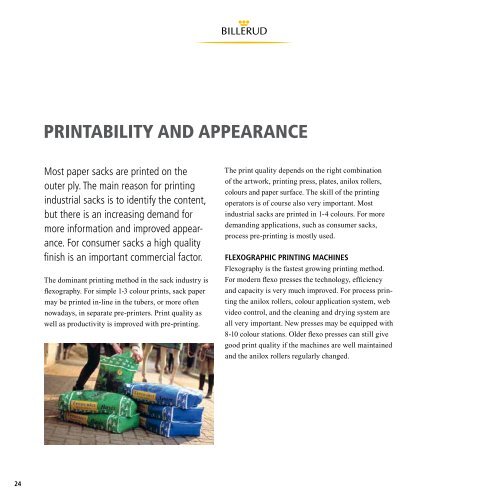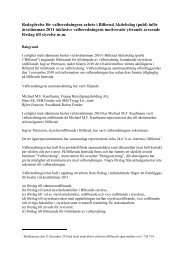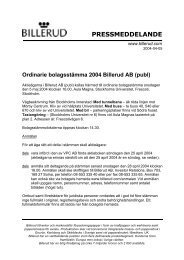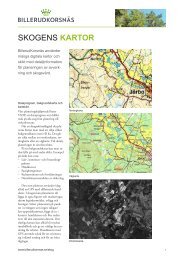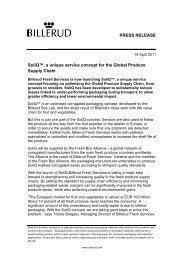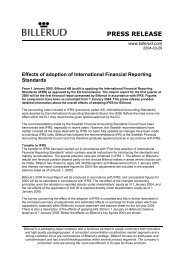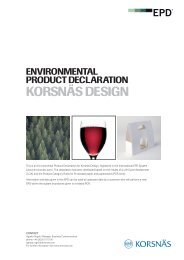Sack handbook - Billerud AB
Sack handbook - Billerud AB
Sack handbook - Billerud AB
- No tags were found...
Create successful ePaper yourself
Turn your PDF publications into a flip-book with our unique Google optimized e-Paper software.
Printability and appearance<br />
Most paper sacks are printed on the<br />
outer ply. The main reason for printing<br />
industrial sacks is to identify the content,<br />
but there is an increasing demand for<br />
more information and improved appearance.<br />
For consumer sacks a high quality<br />
finish is an important commercial factor.<br />
The dominant printing method in the sack industry is<br />
flexography. For simple 1-3 colour prints, sack paper<br />
may be printed in-line in the tubers, or more often<br />
nowadays, in separate pre-printers. Print quality as<br />
well as productivity is improved with pre-printing.<br />
The print quality depends on the right combination<br />
of the artwork, printing press, plates, anilox rollers,<br />
colours and paper surface. The skill of the printing<br />
operators is of course also very important. Most<br />
industrial sacks are printed in 1-4 colours. For more<br />
demanding applications, such as consumer sacks,<br />
process pre-printing is mostly used.<br />
Flexographic Printing Machines<br />
Flexography is the fastest growing printing method.<br />
For modern flexo presses the technology, efficiency<br />
and capacity is very much improved. For process printing<br />
the anilox rollers, colour application system, web<br />
video control, and the cleaning and drying system are<br />
all very important. New presses may be equipped with<br />
8-10 colour stations. Older flexo presses can still give<br />
good print quality if the machines are well maintained<br />
and the anilox rollers regularly changed.<br />
24


